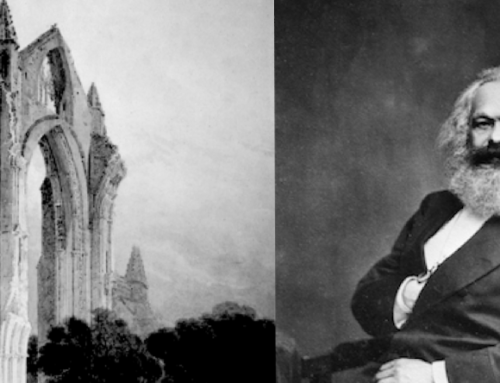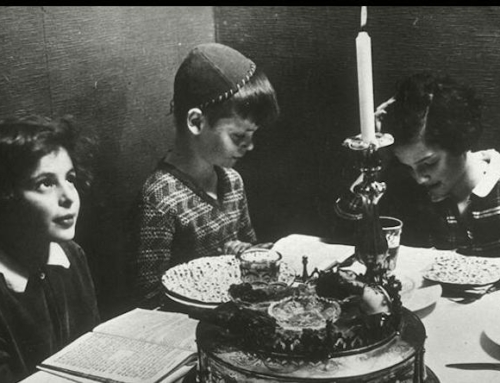In a seemingly insignificant detail in one of the appendices of his masterpiece, The Lord of the Rings, J. R. R. Tolkien notes that the destruction of the One Ring and the defeat of Sauron took place on March 25. What might have led Tolkien to date the destruction of the ring with such precision? Being a devout Catholic, Tolkien most likely was subtly weaving into his work an ancient Christian tradition regarding the Solemnity of the Annunciation, the feast the Church celebrates today.
According to this tradition, the date of the Annunciation coincided with a number of significant events in salvation history. March 25 was not only the day on which Christ was conceived in Our Lady’s womb; it was also the day of the creation of the world, the day Adam and Eve fell, the day Abraham (nearly) sacrificed his son Isaac, the day the Israelites were set free from Egypt, and the day of the crucifixion.
It would be easy to dismiss these associations as pure fancy – how could one possibly determine the exact date of Abraham’s final trial, much less the creation of the world? To interpret this tradition in such a wooden manner, however, is to miss its deeper theological significance. The point is not that each of these events actually happened on the same date, but rather that they mutually illuminate one another. The incarnation—the event the Annunciation celebrates – and the crucifixion brought to a climax the story of God’s dealings with Israel and with the world. The seeds of this tradition can be seen in today’s Gospel reading, in which Luke subtly presents the incarnation as the reversal of Adam and Eve’s sin.
In response to Mary’s question about how she, being a virgin, was to have a child, the angel Gabriel reassures her that the child will be conceived by the Holy Spirit, and therefore “the child to be born will be called holy, the Son of God.” Although we typically associate the title “Son of God” with Christ’s divinity, we ought not to lose sight of the other resonances the phrase would have had for Luke and his readers. In the third chapter of the Gospel, Luke gives his version of Jesus’ genealogy, which begins with Jesus and works its way backward through His ancestors. This genealogy ends with the words “the son of Adam, the son of God.” In calling Jesus the “Son of God,” then, Luke is not only pointing to Christ’s relationship with the Father; he is also portraying Christ as the New Adam.
This interpretation of Luke’s Gospel goes as far back as the second century Church Father St. Irenaeus. In his Adversus Haereses, Irenaeus shows how not only Christ, but also Mary played a central role in undoing the sin of Adam and Eve:
In accordance with this design, Mary the Virgin is found obedient, saying, Behold the handmaid of the Lord; be it unto me according to your word. But Eve was disobedient; for she did not obey when as yet she was a virgin… Wherefore also Luke, commencing the genealogy with the Lord, carried it back to Adam, indicating that it was He who regenerated them into the Gospel of life, and not they Him. And thus also it was that the knot of Eve’s disobedience was loosed by the obedience of Mary. For what the virgin Eve had bound fast through unbelief, this did the virgin Mary set free through faith. (Adv. Haer. 3.22.4)
This traditional interpretation of the Annunciation as a reversal of the Fall also found its way into the arts. Many of Blessed Fra Angelico’s paintings of the Annunciation, for example, include a depiction of Adam and Eve being driven from the Garden, reminding us of the plight to which the incarnation is the solution.
While Tolkien probably set the destruction of the ring on March 25th more for its association with the crucifixion than with the Annunciation, the two are intimately linked—the incarnation is ordered to the crucifixion (and, with it, the resurrection).
Tolkien’s use of this tradition illustrates an important aspect of the incarnation and the cross. While the destruction of the ring meant the defeat of Sauron, this did not put to an end all of Middle Earth’s troubles. The members of the fellowship still had work to do. Similarly, though the incarnation and the cross spell the defeat of Satan, we, too, have work to do. And like Frodo, our success will come not through earthly power, but by humility. For it was by the humility that characterized Mary, the New Eve, that she untied the knot of the first Eve, and it was by his humility that Christ overcame death (Phil 2:5–11). May she who is full of grace obtain for us the graces we need to participate in Christ’s humility and to obey him in whatever tasks he gives us.
✠
Photo by Jeremy Perkins on Unsplash







